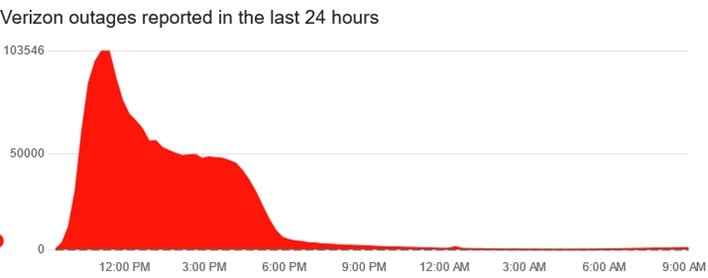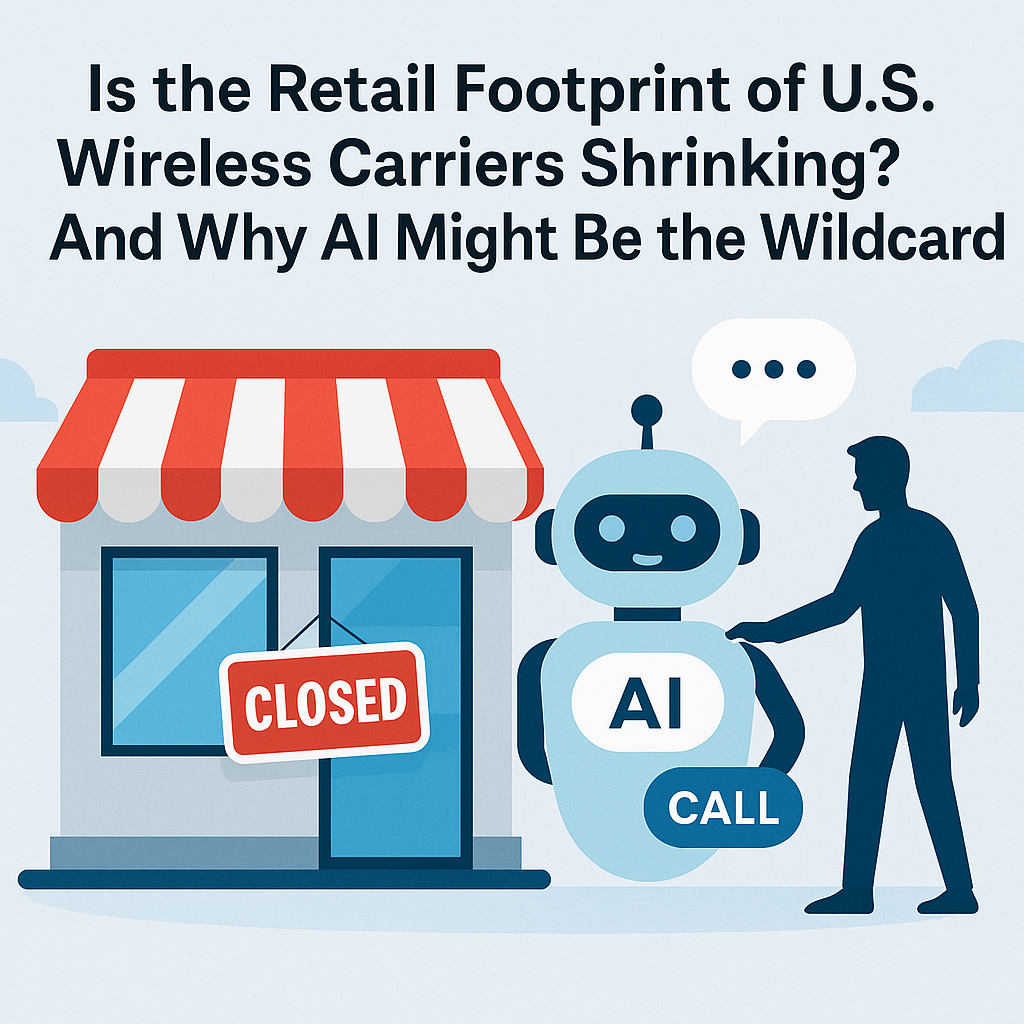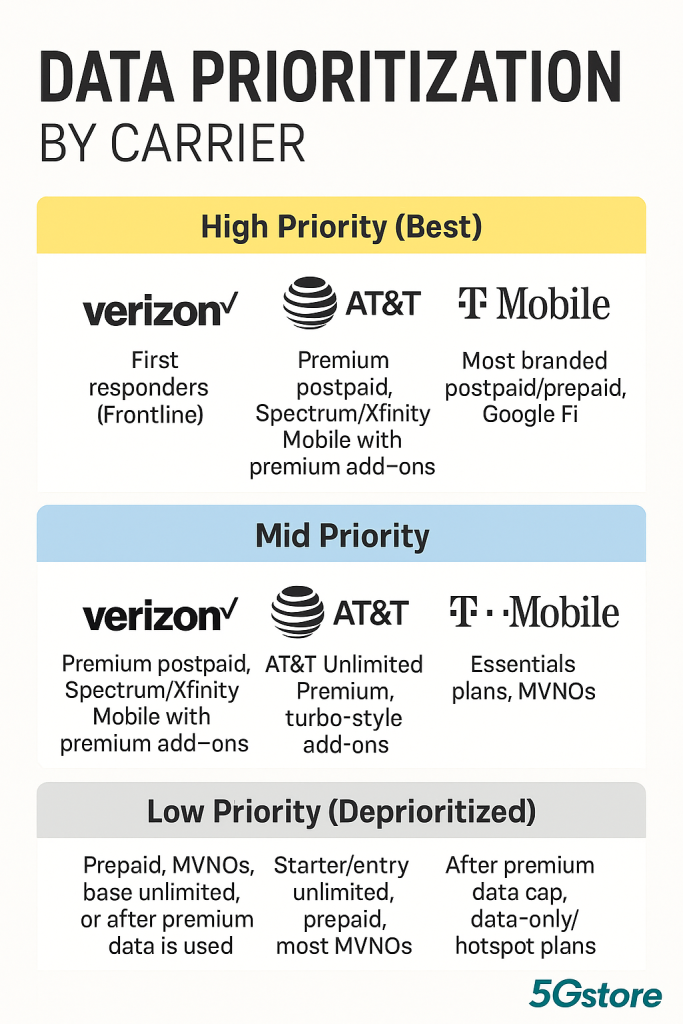Verizon Business Brings Advanced 5G Network Slicing to Enterprise Fixed Wireless Access Verizon Business has expanded its fixed wireless access (FWA) portfolio with a new offering that includes 5G network slicing for enterprise customers. This development moves wireless broadband beyond basic connectivity and closer to the performance expectations businesses have come to expect from wired services. Network […]
Tag: Verizon
Verizon Outage 2026: Downdetector Data, What Happened, and What It Means
Verizon Outage 2026: What Downdetector Data Tells Us On January 14, 2026, Verizon experienced a widespread network outage that impacted customers across the United States. Users reported losing access to voice calls, text messaging, and mobile data, with many smartphones switching into SOS or emergency-only mode. This outage affected both consumers and businesses that rely on Verizon’s […]
Verizon and T-Mobile Shrink Retail Footprints: How AI Customer Service Could Reshape the Wireless Experience
Carrier Retail Is Shifting: What Verizon’s Rumored Store Closures—and T-Mobile Chatter—Mean for Customers, Partners, and AI-Driven Support If you follow wireless retail, you’ve probably seen reports that Verizon may be preparing for layoffs and brick-and-mortar store closures as it doubles down on digital and AI-enabled customer service. While nothing has been officially confirmed, multiple credible […]
Understanding Data Prioritization: How Verizon, AT&T, and T-Mobile Plans Affect Your Speed
When shopping for a wireless plan — whether for your smartphone, tablet, or a cellular router — it’s easy to assume that “unlimited” means you’ll always get top speeds. The reality is more complicated. Carriers and the MVNOs (mobile virtual network operators) that resell their service all use data prioritization policies to decide who gets the best […]
How to Use Your iPhone or Android to Test All 3 Major Carriers – The Ultimate Carrier Site Survey from Your iPhone or Android
When it comes to mobile connectivity, not all carriers perform equally in every location. Coverage maps only tell part of the story; real-world performance depends on signal strength, tower load, and even the terrain around you. That’s why professionals—whether they’re IT managers, RV travelers, or field engineers—often perform carrier site surveys before deciding on a network. In […]
Widespread Internet Disruptions Point to Possible DNS Issues: Why a Backup Plan Matters
A growing number of users are reporting widespread Internet disruptions today, affecting popular applications like Spotify, Discord, and major cellular providers including Verizon and T-Mobile. According to Downdetector.com, these issues are impacting users across multiple networks and services, which points to a potential issue with common DNS servers — such as those operated by Google […]
Verizon Frontline and Cradlepoint by Ericsson: Powering the Future of Public Safety Communications
In an era where reliable communication is paramount for first responders, the collaboration between Verizon Frontline and Cradlepoint by Ericsson stands as a beacon of innovation and dependability. This partnership is reshaping the landscape of public safety communications, ensuring that emergency services are equipped with cutting-edge technology to respond effectively in critical situations. Verizon Frontline: A […]
Ookla’s Speedtest Report: Outstanding Mobile Connectivity Performance in the U.S. (2H 2024)
It’s finally here. The latest Speedtest Connectivity Report from Ookla. Once again, we get to see how our major cellular carriers stack up against each other. This particular mobile connectivity report provides an in-depth analysis of network performance across the United States for the second half of 2024. Based on millions of consumer-initiated tests, the […]
The Evolution of 5Gstore: Pioneers in Wireless Connectivity
For nearly two decades, 5Gstore has been a leader in the wireless connectivity industry, offering innovative solutions for 4G, 5G, and IoT technologies. However, this journey didn’t start in the telecommunications space. The company began as a software development firm in 1988, dedicated to creating software that helped businesses run more efficiently. The pivot to wireless technology […]
Panorama Antennas Becomes the First Verizon Frontline Verified Antenna Vendor
In a significant move for public safety communications, Panorama Antennas has been announced as the first antenna vendor to achieve the coveted Verizon Frontline Verified antenna status. This achievement underscores Panorama’s commitment to delivering high-quality, reliable antennas for first responders and emergency services. With Verizon’s award-winning network serving as the backbone for critical communications, Panorama’s […]











